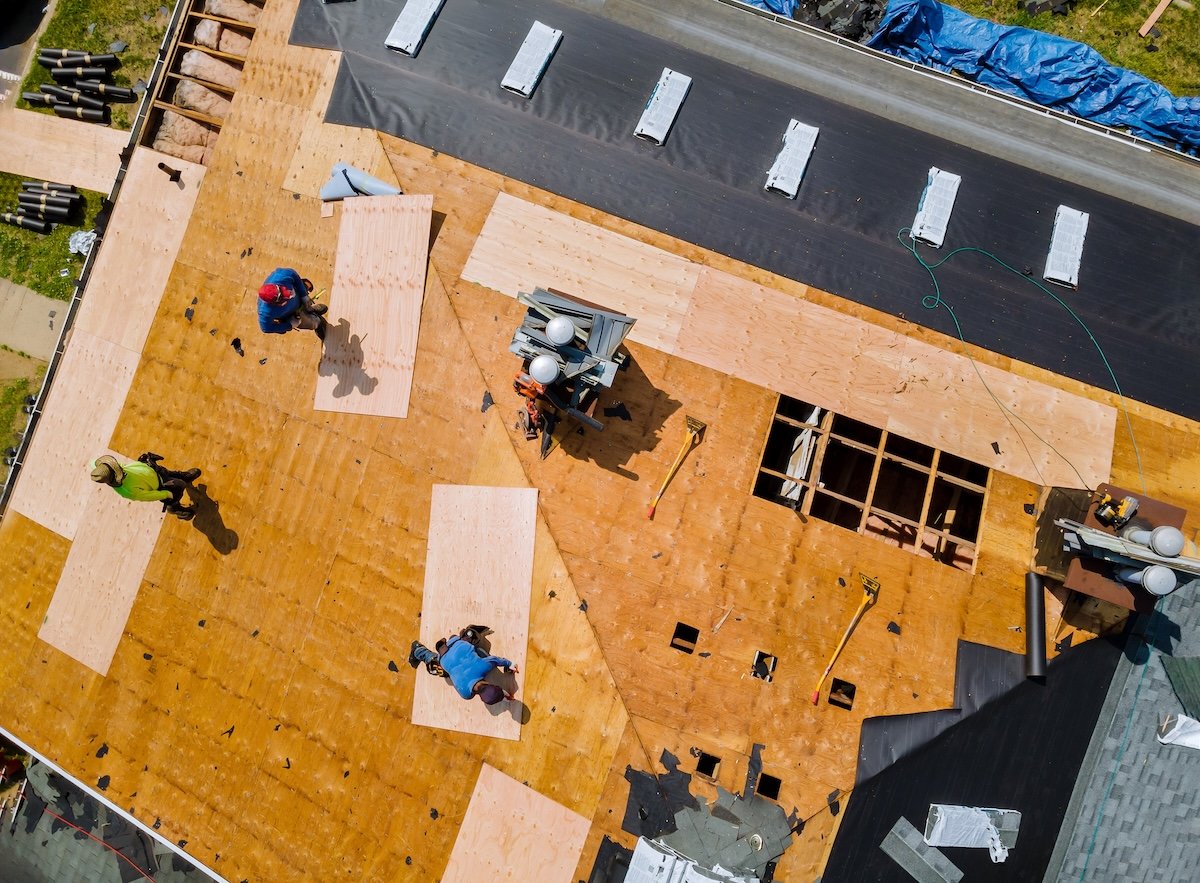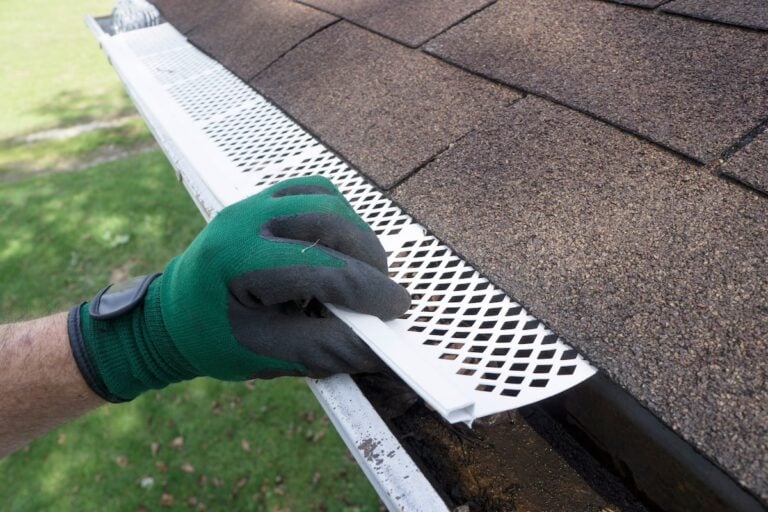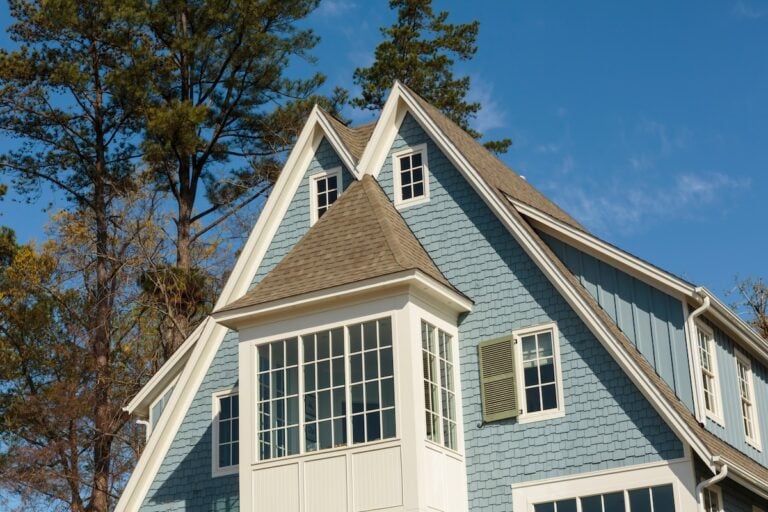Choosing the best course of action for your roof can feel overwhelming. Should you opt for a full roof replacement, or would reroofing be sufficient? Both options have their merits, but the choice mainly depends on your roof’s current condition, budget, and long-term plans for your property. However, many factors—such as cost, timing, weather, material availability, and equipment—must be considered when making this decision. A professional assessment can help determine the best course of action.
In this guide, we’ll break down the key differences, benefits, and scenarios for reroofing and roof replacement. Here’s what you’ll learn:
- Reroofing vs. roof replacement
- Key differences between reroofing and roof replacement (in a numbered list)
- Which option is right for you?
🛠️ Reroofing vs. Roof Replacement
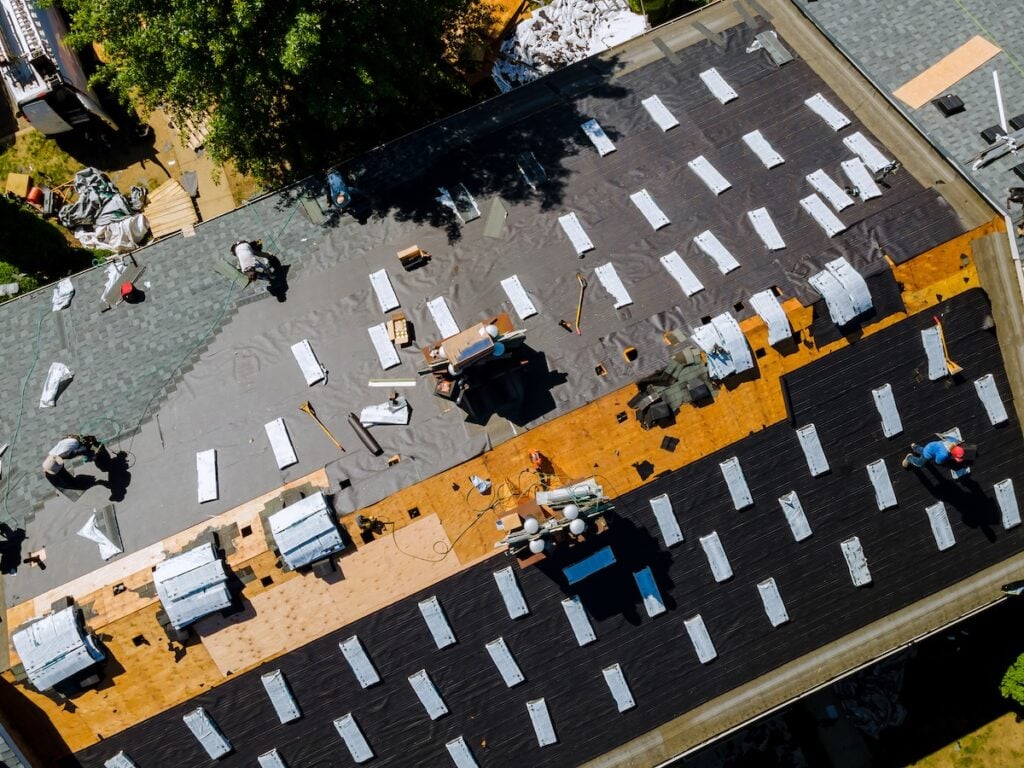
Understanding the difference between reroofing and roof replacement can help you choose the best option for your home. A roofing contractor can assess your roof’s condition and guide you through the reroofing or replacement process.
Here’s a quick breakdown: Local building codes and the number of installed roofing layers can affect your options when deciding between reroofing and roof replacement.
Reroofing involves adding a new layer of shingles over your existing roof. The number of layers already installed on your roof is a key consideration, as too many layers may not be allowed or advisable. Roof replacement, on the other hand, means removing the old roof entirely before installing a new one.
Reroofing:
- Involves adding an additional layer of shingles or roofing material over the existing roof covering, a process known as re-roofing. Building codes often limit a re roof to a second layer; if two layers are already present, a full roof replacement may be required. Different roofing systems may be suitable for a re roof, depending on the existing structure.
- Faster and less expensive since the existing roof structure and previous layers remain intact.
- Requires fewer materials and may utilize an additional layer, leading to cost savings.
Roof Replacement:
- Roof replacement involves a complete tear-off of all existing roofing materials down to the deck.
- The underlayment is carefully inspected for damage and may be replaced to ensure the integrity of the roofing system before proceeding.
- New materials are installed to create a comprehensive new roofing system, providing enhanced protection and durability.
- Roof replacements offer the opportunity to upgrade to a more advanced roofing system or system, improving performance and compliance with current building codes.
- This is a more time and cost-intensive process, but ensures a completely fresh, structurally sound, and long-lasting roof.
⚖️ 5 Key Differences Between Reroofing and Roof Replacement
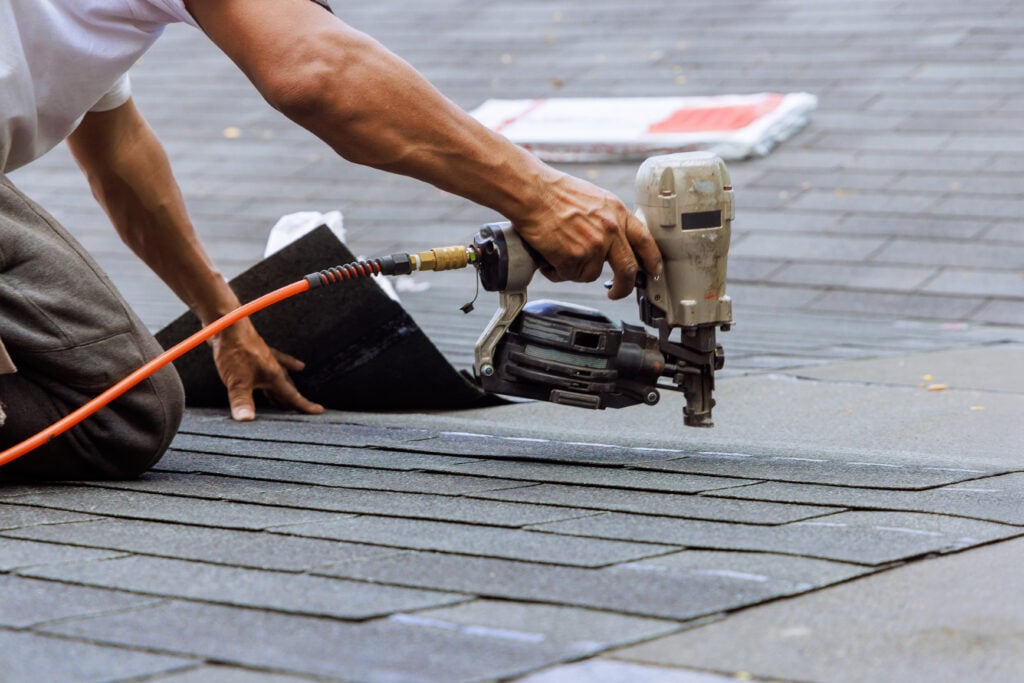
Understanding the differences between these two approaches is important, as many factors must be considered when deciding between reroofing and roof replacement. Deciding which option is best requires careful evaluation of factors such as cost, timing, and the condition of your current roof. Here’s a quick comparison:
1. Process
Reroofing is a process where new shingles are added over an existing layer of shingles without removing the old material underneath. It is a less invasive method that focuses on covering up the existing roof to restore its appearance and functionality.
On the other hand, roof replacement involves a complete removal of the existing shingles, down to the roof deck. During this process, roofers or a roofing professional will inspect the roof for signs of moisture and water damage. They will also inspect the underlying structure to identify any potential issues, such as rot or damage. Any necessary repairs, such as fixing areas affected by water damage or moisture, are made before installing an entirely new roof. Roof replacement provides an opportunity to address structural concerns and ensure a completely fresh start.
2. Time Commitment
Reroofing typically requires less time to complete because it skips the teardown stage of removing old shingles. This streamlined process focuses solely on applying the new layer of shingles, making it a faster option for those looking to restore their roof quickly. In contrast, roof replacement is a more detailed and time-intensive process. It requires careful removal of the old roofing material, an inspection of the roof structure, and proper installation of the new roof. Due to the additional time and labor involved, roof replacement is generally more costly, but it provides a more comprehensive solution.
3. Cost
Reroofing is generally the more budget-friendly option as it requires less labor and fewer materials. By avoiding the teardown of the old roof, homeowners can save on labor costs, making it an attractive choice for those looking for a quicker and cheaper fix. However, roof replacement cost is significantly higher than reroofing due to the additional labor involved in removing the old materials, inspecting the structure, and installing a brand-new roof. For a commercial roof, the costs can be even greater, and building code regulations may affect the process. Insurance coverage is also an important factor—some policies may only cover a full roof replacement, while others might cover reroofing, so it’s essential to check what is covered under your policy. While costlier upfront, roof replacement offers a more durable and long-lasting solution, often making it a better investment in the long term.
4. Suitability
Reroofing is best suited for roofs that are still in relatively good condition, without any significant underlying structural issues. It works well when the damage is minimal, such as aesthetic wear or minor leaks, and the roof’s structure remains intact. For example, if your roof has a single layer of asphalt shingles that are generally in good shape and the surface is flat and even, reroofing may be a suitable option. However, if there are missing shingles or curled shingles, these are signs of more serious problems that may require a full replacement. Installing new materials over old ones can be problematic if the old ones are damaged, uneven, or deteriorated, as this can prevent proper sealing and lead to leaks. Reroofing is not recommended for roofs with extensive damage, rot, multiple layers of shingles, or an uneven surface. For example, if the roof has significant areas of missing shingles, curled shingles, or the surface is not flat, roof replacement is the only viable option. Roof replacement is essential for addressing structural problems, leaks, or significant damage, as it allows for a complete overhaul of the roof to ensure long-term reliability and safety.
5. Lifespan
Reroofing can extend the life of an existing roof by approximately 10 to 15 years, depending on the materials used and the underlying condition of the roof. Regular maintenance, such as inspections and coatings, can further extend the lifespan of both reroofed and replaced roofs by preventing minor issues from becoming major problems. While reroofing provides a temporary solution, the added layer does not offer the same longevity as completely replacing the roof. Replacing the roof ensures a brand-new lifespan, often lasting up to 30 years or more, depending on the quality of materials and workmanship. Additionally, replacing the roof can improve the energy efficiency of your home by allowing you to upgrade to better-insulating materials, which can help reduce energy costs. This makes roof replacement a more durable, energy-efficient, and long-lasting option for homeowners seeking a permanent solution to their roofing needs.
👉 Which Option is Right for You?
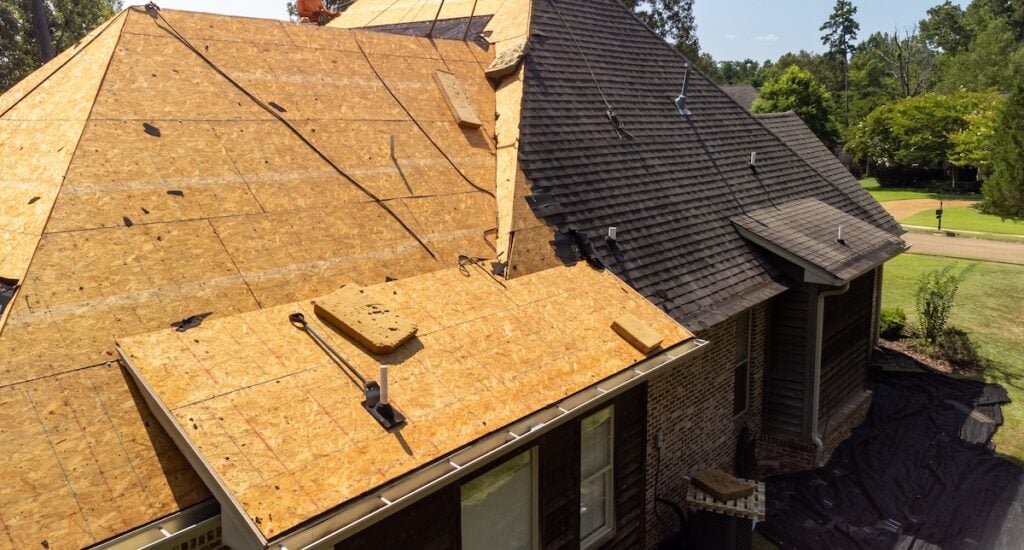
Deciding between reroofing and roof replacement is a significant process that requires careful evaluation. When you decide which option is best, a professional assessment can help determine the right solution based on the condition of your building’s structure. The state of the structure is a key factor, especially for commercial building projects, where roofing techniques and materials may differ. In many cases, reroofing is sufficient, but some situations require a full replacement, particularly if the building’s integrity or local codes demand it. Here are some scenarios to guide your choice:
Choose Reroofing If:
Reroofing is the ideal option when your roof is in generally good condition without any serious underlying issues like structural damage or water leaks. It’s a quicker, more budget-friendly way to enhance your roof’s appearance and provide additional protection without the need for a full replacement. This option is best suited for homeowners and commercial building owners looking for a straightforward and cost-effective solution to refresh their roof without addressing major repairs.
Choose Roof Replacement If:
Roof replacement is the better choice if your roof has significant damage, persistent leaks, or multiple layers of shingles that make reroofing impractical. It offers a long-term, durable solution designed to address serious issues and ensure the structural integrity of your building. Additionally, a roof replacement can significantly boost your property’s resale value, making it an excellent investment for those seeking maximum durability and peace of mind.
🏠 Trust Best Exteriors for Quality Roofing Solutions
At Best Exteriors, we know roofs inside and out. As experienced contractors and roofing professionals, we bring years of expertise, top-quality materials, and a customer-first approach to every project. From thorough inspections to expertly install your new roof or reroofing solution, we provide tailored services for your roofing needs.
Whether you’re considering reroofing or a full roof replacement, our skilled team of contractors and roofing professionals will guide you every step of the way. Plus, with flexible financing options and industry-leading warranties, you can trust us to deliver unparalleled service and value.
